 In the six years that Off the Cuff has been around, I have made a point to try and keep my personal life and background out of the picture. Occasionally, articles have alluded to my upbringing and the Ivy League-ness of the world in which I was raised. While a rich and interesting background to me, it was far from the shiny, coiffed and aspirational world of Ralph Lauren. A more accurate picture may be Lisa Birnbach’s worn around the edges J. Press-ivy-walled-summer-house-by-the-shore take on life.
In the six years that Off the Cuff has been around, I have made a point to try and keep my personal life and background out of the picture. Occasionally, articles have alluded to my upbringing and the Ivy League-ness of the world in which I was raised. While a rich and interesting background to me, it was far from the shiny, coiffed and aspirational world of Ralph Lauren. A more accurate picture may be Lisa Birnbach’s worn around the edges J. Press-ivy-walled-summer-house-by-the-shore take on life.
Privileged to an extent, I suppose, but for the most part fairly grounded and typical. As one of my oldest friends likes to say, I’m the only person he knows whose childhood chores included polishing the family silver. I had never sought to leverage my preppy background on OTC as I simply never thought it overly interesting.
Then the new coffee table book from ASSOULINE, The Ivy League, landed on OTC’s doorstep.
Ivy League v. Preppy
Available at Assouline.com and at ASSOULINE boutiques worldwide, this large, beautiful book is less a treatise on preppy dressing and social signals than it is a love letter to the Ivy League culture. Indeed, Mr. Capello understands something important yet easy to overlook in the midst of the current resurgence of preppy style. And it is this: while one who is preppy may very well be Ivy League, the Ivy League is not simply “preppy.”
Where “preppy” is a style that can be created through presentation, “Ivy League” is a bit more complicated. A certain way of dressing, yes; but it is also a culture that incorporates a decided outlook on life and shared experience. Ivy League is more a way of being than simply a style of dressing, even though style is very much a part of it.
The Ivy League captures this distinction in a wonderfully academic fashion. Each school is profiled and documented with pictures, words, and historical notes that places it within both the Ivy League itself and the larger American culture.
More than any other academic construct, the Ivy League continues to influence the very idea and ideals of American higher education. It also deeply influences the styles we broadly refer to as American traditional, preppy, East Coast, classic, or – yes – Ivy League. Where preppy is a fashion statement, Ivy League is the cultural underpinning which gives it form and the nuances of which are much harder to affect without personal experience.
This has already become a cherished addition to our library, and not only because of its outward beauty and dense content – both of which are exceptional. This book is meant to be displayed and explored.
For me, The Ivy League represents part of my family’s story, reaching back through Ivy League history more than 100 years. Now, allow me to point out that this article is somewhat lengthy and a personal reflection of sorts. I have never put words to paper, so to speak, describing the impact of growing up with a strong Ivy League influence. Honestly, it never really occurred to me until now, because of this book.
And to be clear, I myself did not attend an Ivy. No, I am a proud alumnus of Boston’s Northeastern University. Far too distracted a high school student, I never even contemplated applying to Yale or Harvard, even just to collect some elite rejection letters. Instead, I wound up flourishing at what continues to be an exceptional and world-class university. However, at my core I will always be a bit of a Yalie.
Yale
As children, my brothers and I were surrounded by generations of Ivy League influence. I quite literally grew up in and around Yale University. Every fall meant weekends at the Yale Bowl, tailgating with friends and family. Yale professors were our family friends and of course, the old Yale COOP was our defacto department store. We would wander through the Old Campus, exploring the city and sometimes listen to the debates at the Yale Political Union.
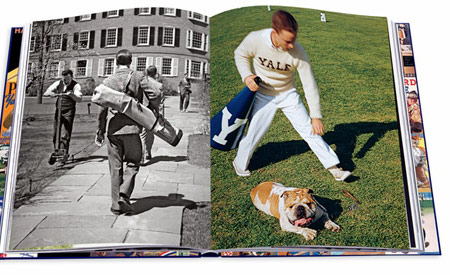 I still have my lending card from the Sterling Memorial library. It’s a breathtakingly Gothic homage to a medieval cathedral; a secular temple of knowledge. Our favorite place to go for lunch with mom and dad? Mory’s. One of my cousins was a Wiffenpoof and it was always fun to sit listening to the young men sing there on Monday nights.
I still have my lending card from the Sterling Memorial library. It’s a breathtakingly Gothic homage to a medieval cathedral; a secular temple of knowledge. Our favorite place to go for lunch with mom and dad? Mory’s. One of my cousins was a Wiffenpoof and it was always fun to sit listening to the young men sing there on Monday nights.
“You are a Son of Yale”
My father attended Hotchkiss preparatory school, Yale College, and then Yale Medical School. Opting to return to the New Haven area after service in the U.S. Army, he has remained close to the school ever since. Now a Fellow of Berkley College, he was also named a Son of Yale for his work with the medical school alumni association. He even taught a clinical diagnosis class at the medical school after retiring from being a full-time physician.
Of course, I am proud of my dad regardless, but these accomplishments are noteworthy to me because he grew up working class on the wrong side of the proverbial tracks and was a scholarship boy throughout his prep and Ivy years. While of little consequence today, to be on scholarship at Hotchkiss and Yale in the 1950s was tantamount to carrying a mark of shame. In fact, one of his scholarship obligations at Yale was to wait tables, white gloved, and serve his fellow non-scholarship students.
On the other hand, getting into Yale back then was a tad less stressful. Called into the office of Hotchkiss’ headmaster early in his senior year, my father was asked if he had given thought to yet to college. Yes, he replied. He wanted to attend Yale. The headmaster nodded, made some notes and picked up the telephone. He spoke, “Yes, I have another one for you…” It was done and back he went to class.
While being on scholarship scarred him in some ways, the overriding appreciation of what Yale gave back to him is what truly framed his life moving forward. He is the definition of a modest New Englander, instilling in his sons an abiding passion for education, never forgetting his roots, and never playing his Ivy League hand. But he is and will always be a Yale Man.
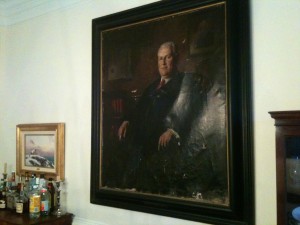 My mother’s side of the family has a long history with the school. Her father, Jerome F. Donovan, attended Yale College and received his law degree from Columbia Law School. His father somehow skipped college altogether, was accepted into Yale Law, and went on to serve in Congress as a democratic representative of New York’s 21st district.
My mother’s side of the family has a long history with the school. Her father, Jerome F. Donovan, attended Yale College and received his law degree from Columbia Law School. His father somehow skipped college altogether, was accepted into Yale Law, and went on to serve in Congress as a democratic representative of New York’s 21st district.
Mom’s maternal grandfather, John Lee Gilson, was a giant of a man and a figure who still looms large in our family to this day. Literally, I have a huge portrait of him in our dining room. It used to hang in the New Haven County Courthouse, where he was consecutively elected judge of probate for more than 20 years. It was painted by Deane Keller, Yale’s unofficial portraitist whose other works still hang in the U.S. Capitol’s Senate Cloak Room. The story goes that the courthouse gave it back to our family as they already had too many of his portraits and needed the wall space.
Mory’s
Gilson, a prodigious fellow, was a cultural and political butterfly. Dapper and elegant, convivial, intellectual, and worldly, he was always in motion. A Yalie through and through, he was president of the Mory’s Association for 16 years until his death, upon which the association passed a resolution, which reads in part, “We know further how many and how broad his interests were: how prodigal he was of his friendship, yet he has left with us an abiding sense that Mory’s lay close to his heart; that he found it the most congenial outlet for his great capacity for friendship and his love of Yale.”
We still have his Mory’s Cup – a beloved family treasure. And in the Mory’s clubhouse, what is presently called the President’s Room had been known for decades as the Gilson Room.
One of the most memorable times for our family was my parent’s 50 wedding anniversary, which we celebrated at Mory’s. Dozens of family and friends filled the private rooms upstairs and the Cups, including the family Mory’s Cup, made their rounds. It was one of the last private events held at 306 York Street before the old Mory’s shut down. Happily, Mory’s lives again – fresh and updated – but to me it will always be the timeworn, coat-and-tie only place of my youth.
From the party…
Dartmouth
While I have cousins who are Harvard, Brown, and Columbia alums, Dartmouth is another school embedded in my childhood. My family has a small vacation house near Hanover, New Hampshire, home to Dartmouth College. And those who have been up there know, Dartmouth is Hanover.
So even before my oldest brother attended college there, it was a place familiar to us, if only to attend the Yale v. Dartmouth games when not in New Haven. The Dartmouth Winter Carnival, with its massive ice sculptures and towering bonfire was an annual winter event, cemented in the family calendar.
No pressure on the rest of us, but being a classic first sibling and role model, brother #1 was accepted to Yale, Harvard, and Dartmouth. This remarkable feat was repeated by no other son. Not even close. Being an outdoorsy hippie, he opted for Dartmouth because, among other amenities, it has its own mountain (Mount Moosilauke) and its own ski hill.
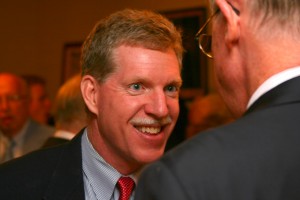 Being completely self-effacing and disinterested in status markers, the Green Mountains suited him better than Harvard Square. It was fun being the youngest brother back then. I remember spending the night at his room in Casque and Gauntlet’s building, the “Dartmouth Outing Club President” sign on his door. That position got him a huge corner room with a fireplace. If it weren’t for all the smelly hiking gear, ropes, and crampons hanging from the ceiling, the place would have had a cool Harry Potter feel.
Being completely self-effacing and disinterested in status markers, the Green Mountains suited him better than Harvard Square. It was fun being the youngest brother back then. I remember spending the night at his room in Casque and Gauntlet’s building, the “Dartmouth Outing Club President” sign on his door. That position got him a huge corner room with a fireplace. If it weren’t for all the smelly hiking gear, ropes, and crampons hanging from the ceiling, the place would have had a cool Harry Potter feel.
This did not mean he wasn’t up for Ivy League rivalry when the opportunity presented itself. His shot came one year when the Dartmouth football team was playing Yale, at New Haven. Using our home as his forward operating base, he and a classmate somehow snuck into Yale’s iconic Harkness Tower. Climbing right up to the top, they hung a huge “GO DARTMOUTH” banner from the side and crept away undiscovered. Being experienced mountaineers helped as they were trapped outside for a while when the tower’s organist stopped by for an impromptu evening practice.
Ivy Culture (& Style)
And what about those Ivy League style influences? While similar to the preppy aesthetic, there is a certain tang to Ivy League that is deeper than just dressing a certain way. It’s a cultural aesthetic born of social terroir.
Dartmouth’s rugged location and harsh weather gave birth to an LL Bean- and later Patagonia-influenced lifestyle. It’s not an affectation, it’s design born of necessity. Cool autumns and punishing winters lead to the likes of warm beaver coats and later classic parkas, corduroys, thick sweaters, and heavy woolens. Shorts and trainers, sporting-influenced wares, mixed with dressier country fashions matched the outdoorsy and sport-focused warmer months.
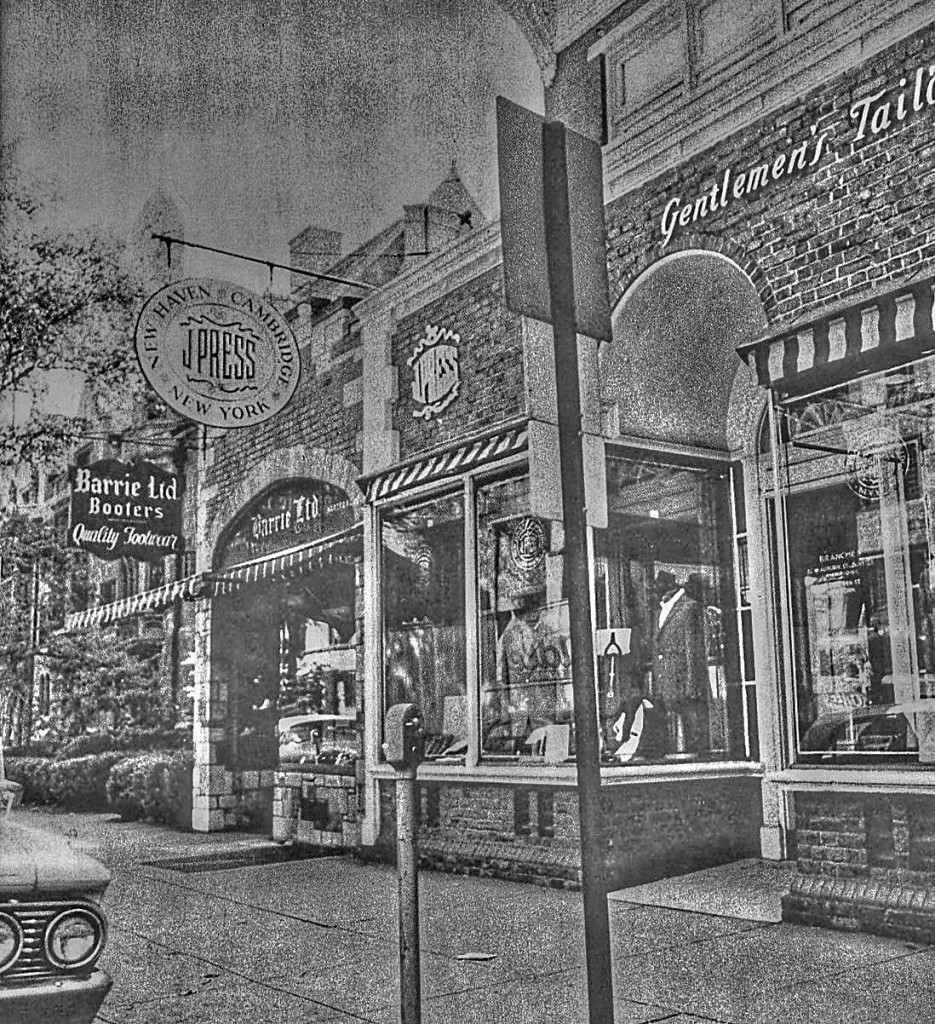 Yale’s style on the other hand was inspired by its town and country influences. New Haven is a city, but it’s located along Connecticut’s coastline. Town clubs and yacht clubs vied for social and sartorial influence.
Yale’s style on the other hand was inspired by its town and country influences. New Haven is a city, but it’s located along Connecticut’s coastline. Town clubs and yacht clubs vied for social and sartorial influence.
Yale was also where the classic concept of traditional blue blazers and loafers, khakis and button-down oxfords helped to define the very image of Ivy League style. Coat and tie was a requirement for class, and J.Press was where you went to get appropriately outfitted. You picked up some new bucks at Barrie Ltd., and your Gant button down oxfords at the COOP.
But it was the cultures surrounding these schools and influences of your peers and professors that helped to guide and instill the cultural patterns and social morays that were the building blocks of Ivy League style. These traditions are passed down father to son, friend to friend. But it is more than just dressing, it’s the meaning underneath, even if that meaning is just tradition.
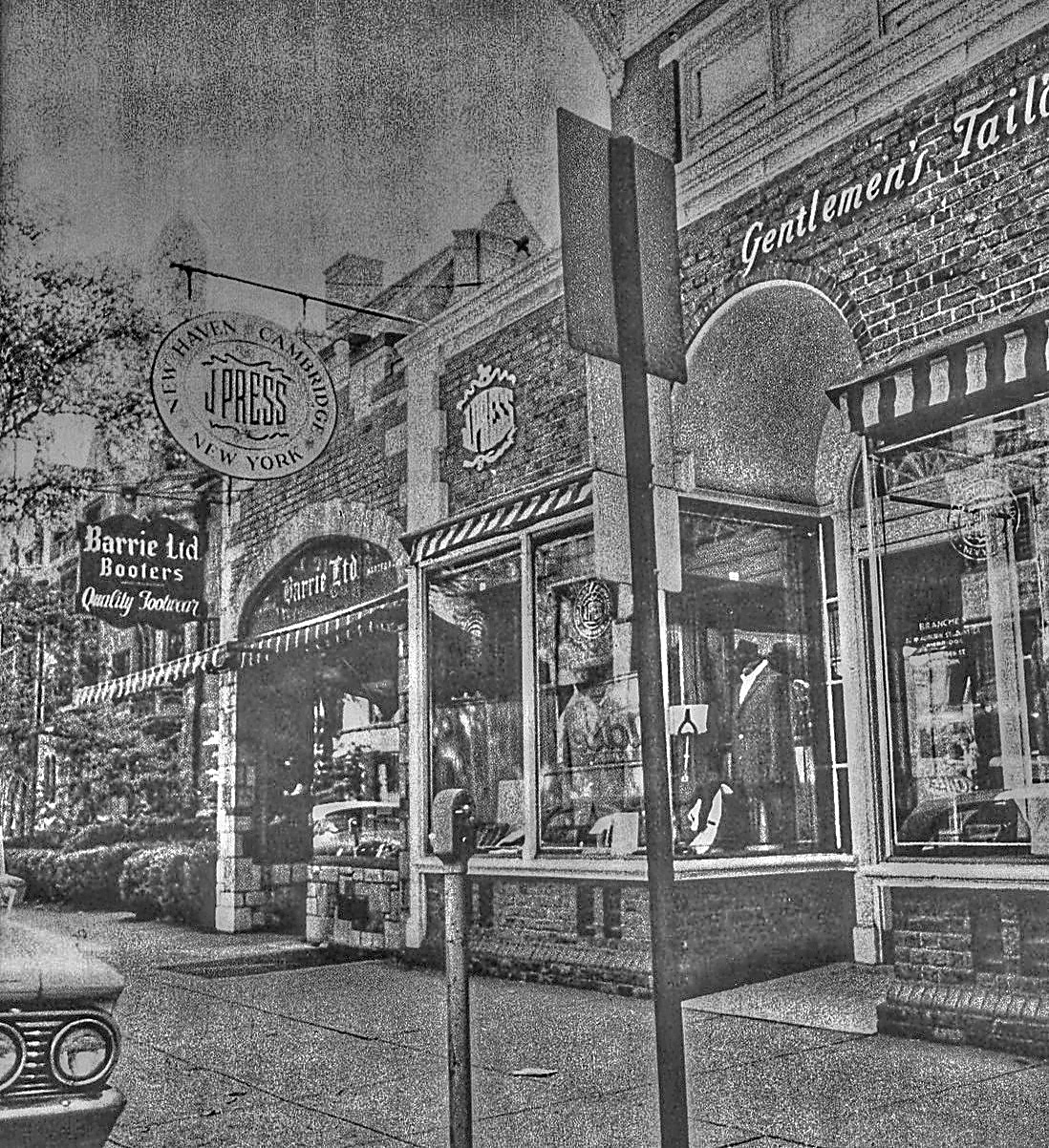
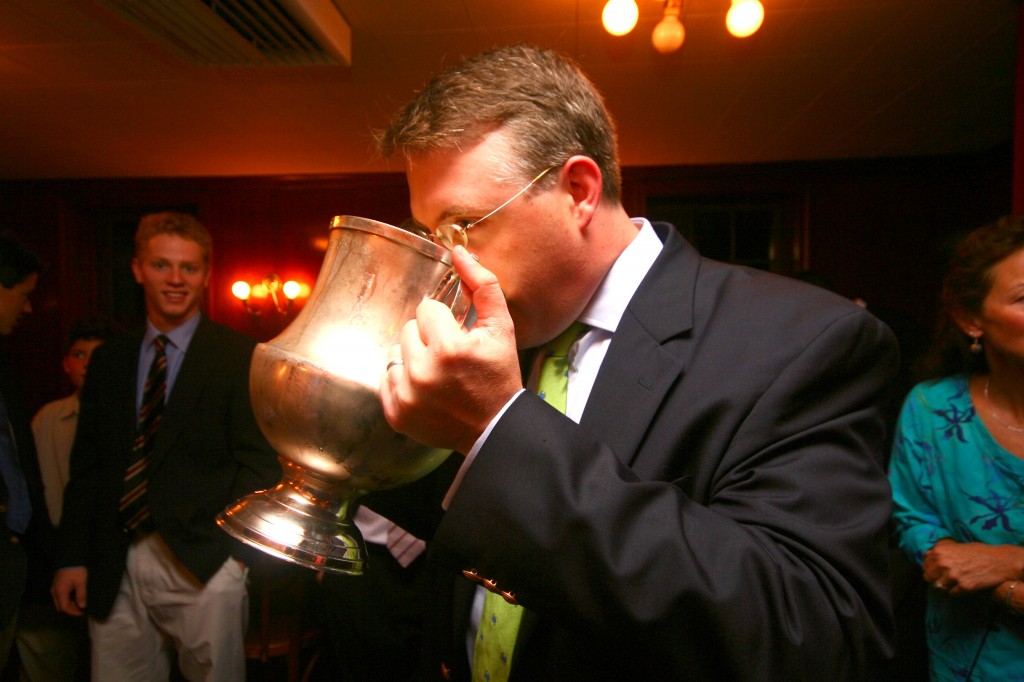
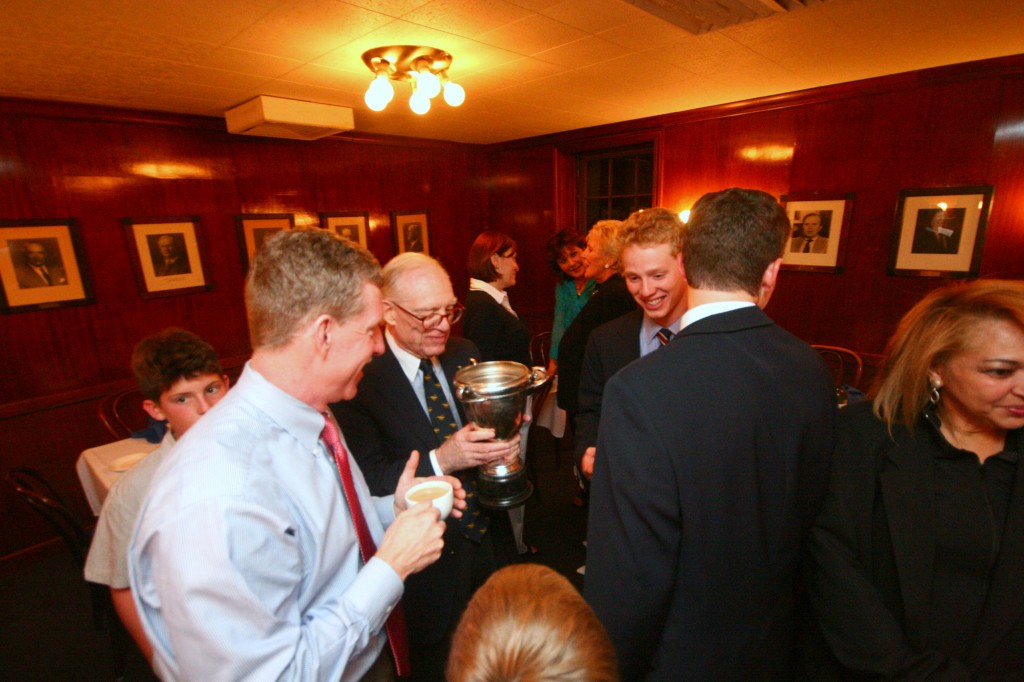
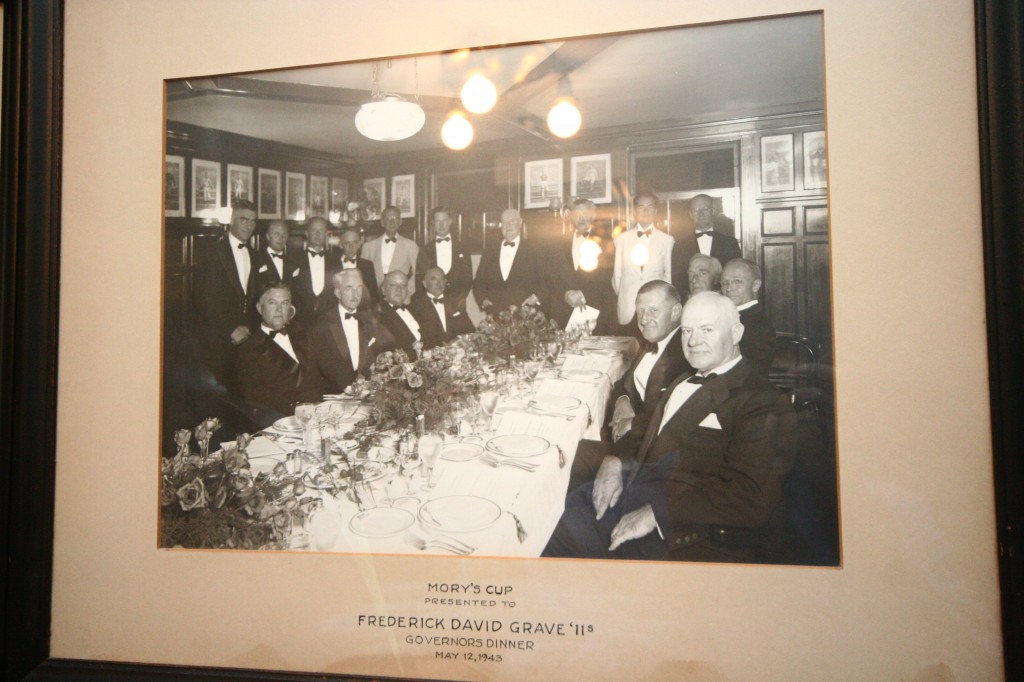
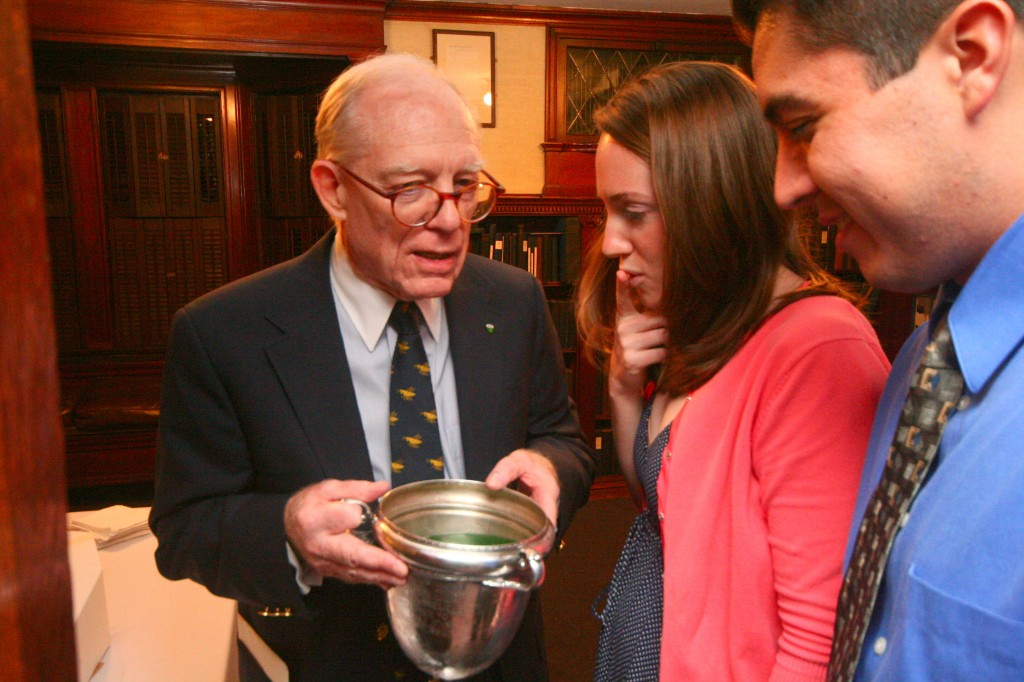
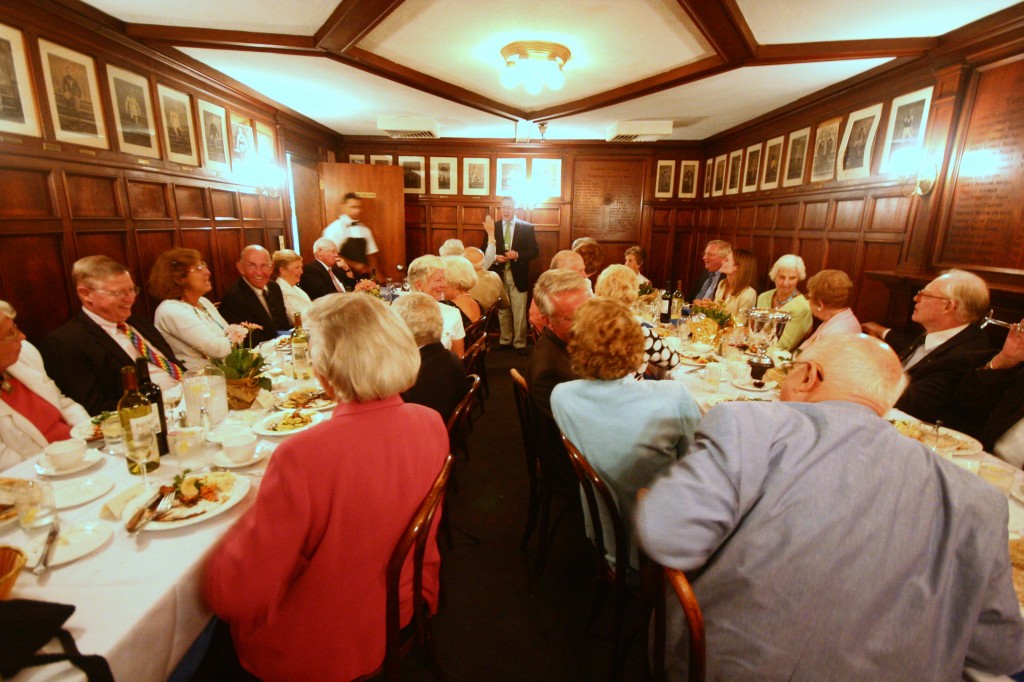
A very nice read, thank you for sharing it.
Chris C. – Thanks very much for the kind words, glad you enjoyed it.
A very interesting look into the tradition behind these institutions and your family. Thanks for sharing. I enjoyed the stories about Greg, the cup, and seeing photos of G&B’s family! I would be very interested to learn more about how the Ivy League tradition (in particular the style) is faring today on these same campuses.
I’m confused, is your family in the book?
Thom – No, it is not.
Hello, my name is Christopher John Gilson, my father’s name is John Gilson, my Grandfather’s name is John Gilson. I’m from New Haven, Connecticut. I work at the Yale Bookstore. Are we related? Because this is tripping me out.
Hey Chris – that is pretty weird. I’m not sure if we are related, however, if your great-grandfather was one of JLG’s brothers, than we sure could be.
Going back, is your family from the New Haven area?
Regardless – it’s a pretty cool coincidence!
Best,
Chris
We are from New Haven, and I did some asking around, and apparently a Judge Gilson, who was somehow a relative, got my grandfather, John Gilson, his job as a New Haven policeman. I need to do some more research, but the coincidence is too weird. Even the fact that I got to this page.
What a fascinating article. I’d love to hear your thoughts on The Old Money Book. Thank you very much.